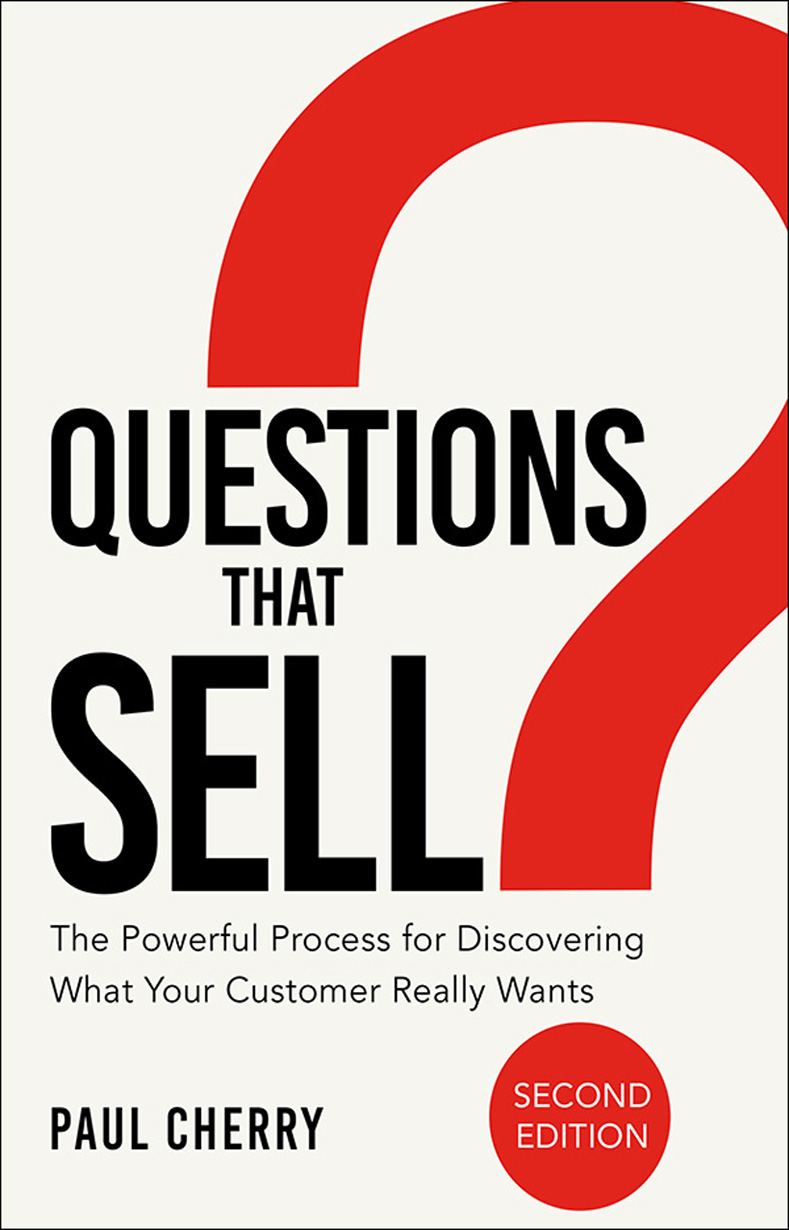Questions That Sell Summary
Chapters, PDF & Review of Paul Cherry’s Book
Questions That Sell
Author: Paul Cherry
Click Here to Get the PDF Summary of This Book & Many More

Customers do not want to “make friends”; they want to see results and substantive relationships provide those.
Why ask good questions?
- Motivate your prospective customers to do the talking.
- Differentiate yourself from your competitors
- Demonstrate empathy for your prospective customers.
- Facilitate a prospective customer’s awareness of his needs and help him come to his own conclusions
- Prompt a prospective customer to recognize the importance of taking action.
- Discover how a particular company makes a purchasing decision, as well as whom the decision makers are within the company.
Your opening sound bite in a pitch should hit on the emotional desire to overcome failure and/or achieve greater success. 98% of prospects want one or the other.
Start with warm-up questions. Don’t sell too hard too early.
Ask about the past. For example:
- What would you say is different about your organization today from when you started with this company?
- What have been some of your likes and dislikes with vendors in the past?
- Since you have been with the company, what have been some of the biggest hurdles you have faced?
Questions to uncover problems:
- What problems are you currently experiencing?
- What’s working? What’s not?
- If you could wind back the clock or wave a magic wand, what would you change?
Questions to disrupt existing vendor relationships:
- How does your ideal situation compare with your current situation?
- If you could change one thing about your current vendor, what would it be?
Questions to strengthen existing customer relationships:
- How can we make your life easier?
- What is it that you value most about doing business with us?
The “why” question. Getting information on motives:
- Walk me through the steps that led you to this conclusion.
- Share with me what is motivation your decision to…?
- What’s in it for you to implemen this….?
Your customers’ decision making criteria:
- How do you measure success with a current vendor?
- When it comes to price, quality, service, devliery, customer support, and ease of use, which is most important to you?
- Let’s assume you are looking at three potential vendors who meet all of your criteria, including price. How would you then make a decision?
Three step qualifying process to a prospect’s answer
- Agree – Find something in the response to which you can agree.
- Clarify – After agreeing with some part, get as much detail as possible about the response.
- Legitimize — determine if the prospect is sincere or just trying to get rid of you politely. For example, before committing to trip out there in person, say, “Let’s just assume that I come out to your facility for a day. You’re able to pull a group of people together, we do a demo, and everyone really finds value in what we have to offer. What do you see happening next?”
- Other ways to begin legitimizing questions: “Assuming we can..” “What if…” “Let’s just pretend…” “Just suppose…” “Imagine for a moment…”
Expansion Questions
Ordinary: Who is the decision maker? When will you make a decision? What is your time frame?
Expansion: Walk me through your company’s decision-making process.
Ordinary: What do you like about your current vendor?
Expansion: Describe for me the qualities you look for when choosing a vendor.
Ordinary: Is price important to you? Is quality important to you? Is service important to you?
Expansion: Explain to me the criteria you use to make a decision.
Lock-On Questions
Customer: We have been trying to get this project off the ground for several months.
Lock-On: I noticed you said the word “trying.” What has worked so far and what has not?
Customer: I am looking for a partnership rather than just someone to sell me a product.
Lock-On: Could you give me some specifics of what you mean when you say “partnership”?
Vision Questions – they have the word “if”
- If we could elimnate that problem you are currently experiencing, that problem that is costing you $1 M a year, what effects do you think that would have on your company?
- If those changes in your career were to happen now, how do you think your life would look five years from now?
- If this problem were solved, what would it enable you to do?
The Four Step Process for Handling Objections
- Find a Point of Agreement. “Your price is too high” they say. Instead of arguing, say something like “I understand that money is an important issue to you.”
- Offer a Question of Clarity. Ask a question that gets to the heart of the problem.
- Educate the Customer. Show concrete results from other customers, show examples, use comparisons/metaphors.
- Secure a Commitment.
More questions to clarify price
- Who else will be involved in approving the budget?
- How will the funding be determined for this project?
- What kind of ROI are you expecting?
Click Here to Get a Free PDF with 40+ Business & Marketing Book Summaries
This work is licensed under a Creative Commons Attribution-Share Alike 3.0 Unported License.

